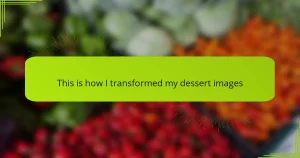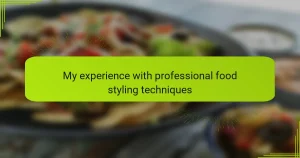Key takeaways
- Visual documentation enhances the storytelling of recipes, connecting emotionally with viewers through details and authenticity.
- Essential photography tools include a good camera, natural lighting, and small accessories to improve image quality and stability.
- Capturing the process through step-by-step images provides a visual guide that helps others understand and appreciate the recipe better.
- Editing and organizing photos is crucial for crafting a visual narrative, making it easier to share the experience of creating desserts.
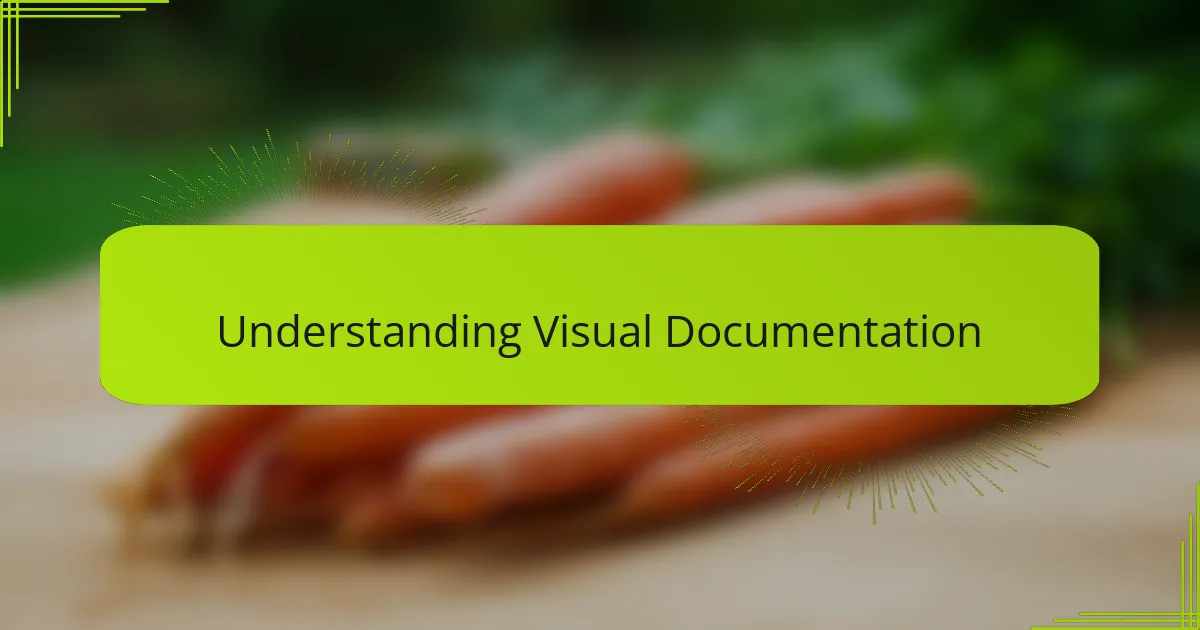
Understanding Visual Documentation
Visual documentation, in my experience, is more than just snapping a photo; it’s about capturing the story behind each dessert. Have you ever noticed how a single image can evoke the aroma, texture, and even the joy of a freshly baked treat? That’s the power of visual storytelling—it connects you emotionally to the recipe before you even take the first bite.
When I first started documenting my dessert creations visually, I realized it helped me see the process differently. Instead of just focusing on the end product, I paid attention to the small details—the swirl of frosting, the crumb texture, the vibrant colors. This deeper observation made my recipes come alive not only for me but also for anyone who views them.
Understanding visual documentation means embracing imperfection and authenticity, too. Sometimes the lighting wasn’t perfect, or a topping didn’t set quite right, but those “flaws” told a genuine story about the dessert’s journey. Isn’t it refreshing to see real moments captured, making the recipe feel approachable rather than intimidating?
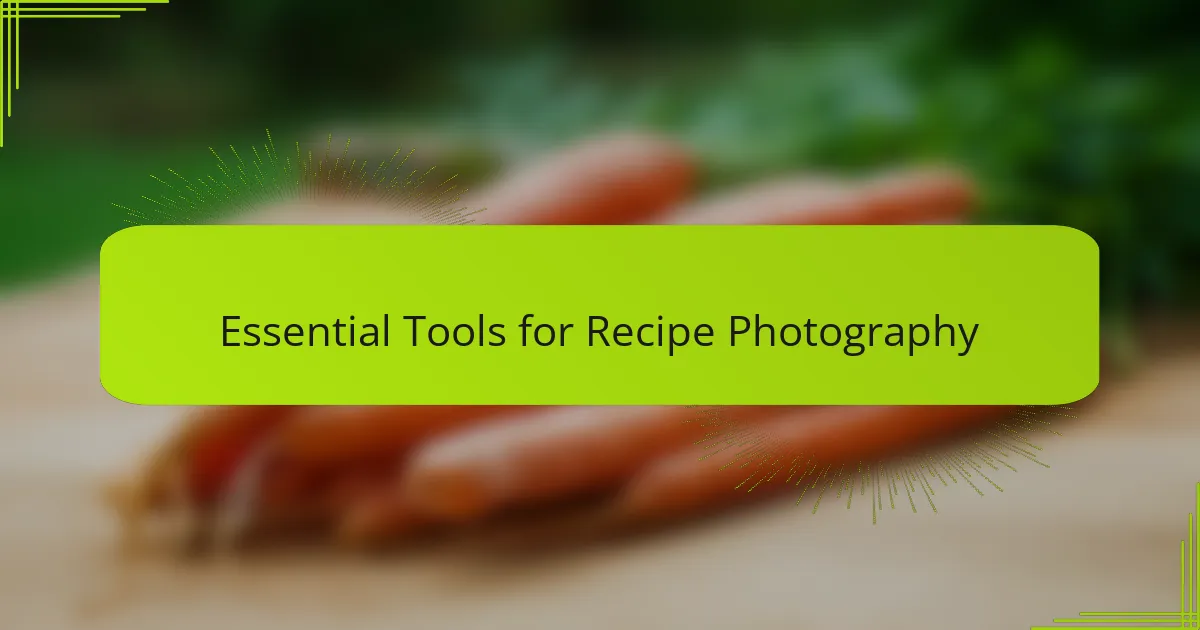
Essential Tools for Recipe Photography
One tool I quickly learned was indispensable is a good camera. While I started with my smartphone, upgrading to a DSLR made a world of difference in capturing sharp details—the kind that make frosting swirls and sugar crystals almost tangible. Have you ever tried zooming in on a blurry photo? It definitely takes away from the magic of that perfect bite.
Lighting, in my opinion, is just as crucial as the camera itself. Natural light became my best friend because it brings out the true colors and textures without harsh shadows. I remember spending hours arranging my setup near a window, experimenting with angles just to get that soft, inviting glow that makes every dessert look irresistible.
But the small tools often go unnoticed—the tripod, reflectors, and even simple props like a spatula or a rustic plate. These accessories helped me stabilize shots and control reflections, ensuring each image told a clear, delicious story. Don’t underestimate how much a sturdy tripod can improve your patience and creativity during a shoot.
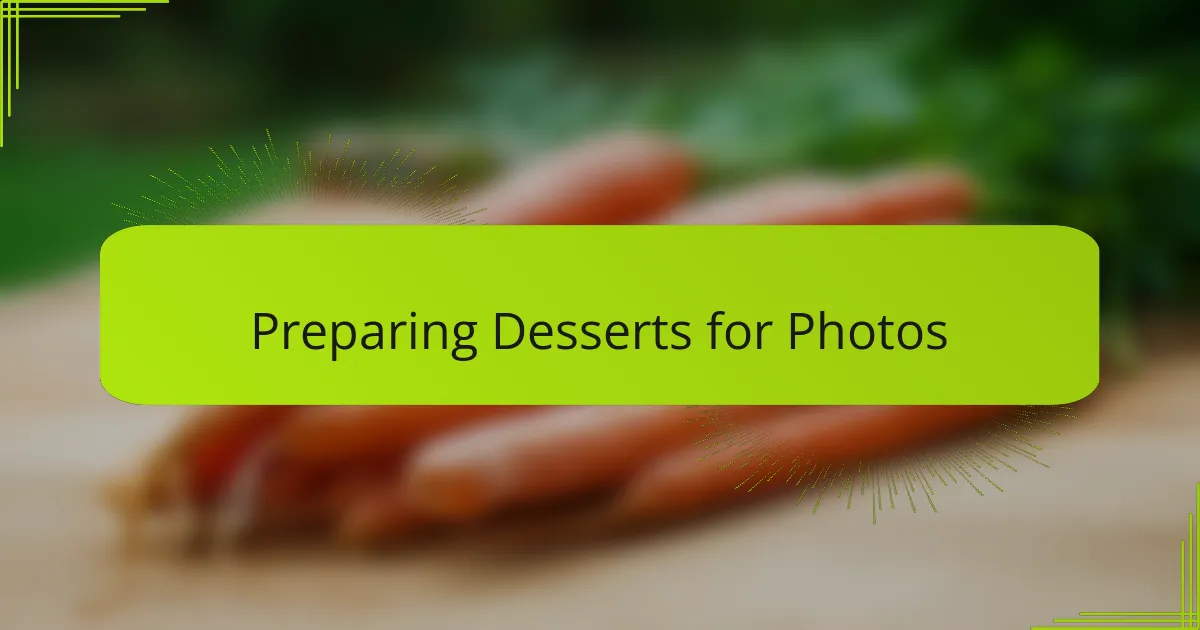
Preparing Desserts for Photos
Preparing desserts for photos became an art in itself for me. I learned that the way a dessert sits on the plate can change everything—just a gentle dusting of powdered sugar or a carefully placed mint leaf made the image come alive. Have you ever caught yourself adjusting a slice of cake multiple times, just to find that perfect angle? That’s where patience and attention to detail truly pay off.
I also discovered that timing is key when preparing desserts for the camera. Some treats look their best fresh out of the oven, while others need a moment to set or cool. I often found myself racing against time, balancing the urge to capture that warm, gooey brownie right away with the need for it to firm up enough to slice cleanly. It’s a delicate dance between the science of baking and the art of presentation.
One surprise was how small imperfections can add charm. Rather than obsessing over flawless piping, I embraced the natural, homemade feel—those little cracks or uneven layers made the dessert feel more inviting and real. Isn’t that what we all want from our recipes, a little warmth and character that makes you want to dive right in?
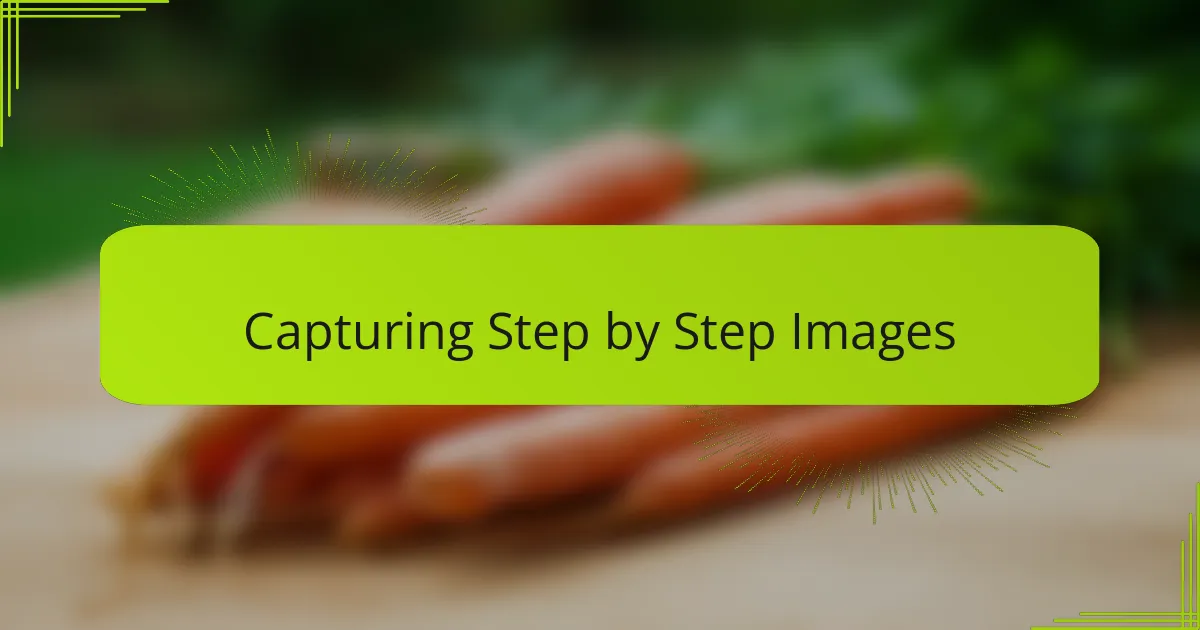
Capturing Step by Step Images
Capturing step-by-step images transformed the way I approached documenting my recipes. Instead of rushing to the final presentation, I slowed down and photographed each stage—the mixing, the folding, the pouring. Have you ever noticed how pausing to capture these moments makes you appreciate the process more deeply?
I found that these images not only tell a story but also serve as a visual guide for others. Showing how the batter should look at various points or the texture changes during baking removes guesswork. It’s like having a friendly hand to hold you through the recipe, and that comforting feeling is something I wanted to share.
Sometimes, the hardest part was deciding which steps were photo-worthy. Not every moment looks picture perfect, but I learned to embrace those imperfect shots—they often reveal the real magic behind the scenes. Don’t you think it’s those genuine glimpses that make a recipe feel approachable and achievable?
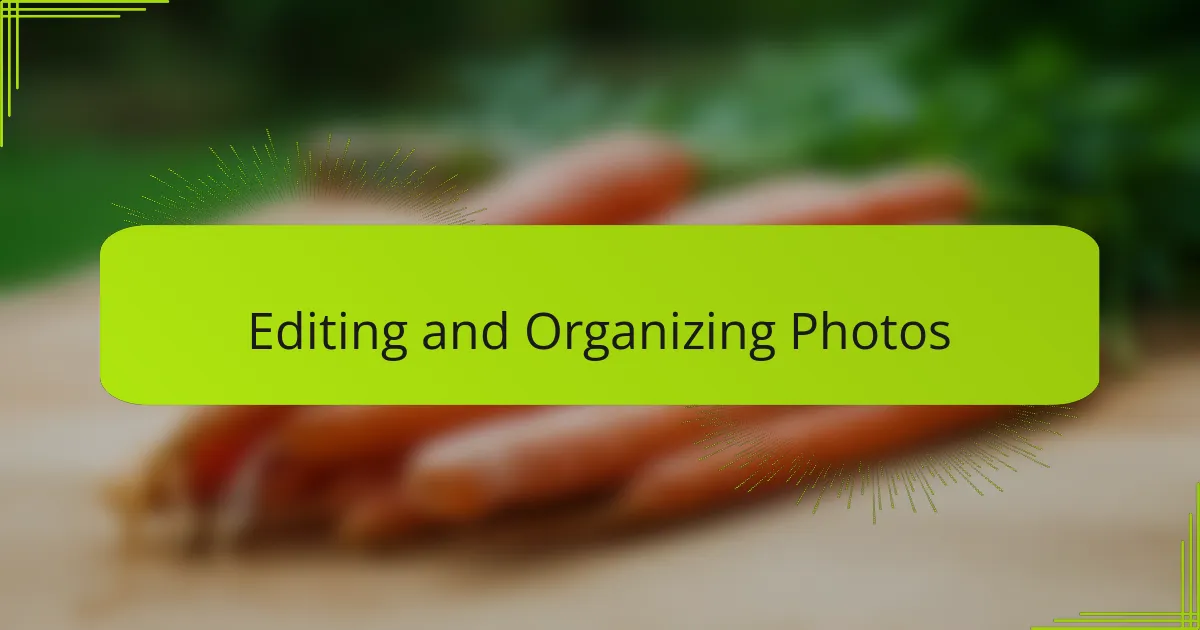
Editing and Organizing Photos
Editing my dessert photos quickly became a creative ritual I actually looked forward to. I found that a little tweaking—brightening the image, adjusting contrast, or sharpening details—brought out the textures I wanted to highlight, like the crisp edges of a tart or the creamy swirl of frosting. Have you ever noticed how just a slight change in brightness can make a chocolate cake look even more decadent? That small edit can truly change the mood of the entire photo.
Organizing my growing collection of images was another challenge I didn’t expect. Early on, my photos were scattered across folders with vague names, which made finding the perfect shot frustrating. Creating a dedicated folder system sorted by recipe and date saved me so much time and stress—I could quickly pull up images whenever I updated a post or shared a recipe. Isn’t it amazing how simple organization frees you up to focus more on the creative side?
I also started using tags and star ratings to mark the best shots and keep track of different stages—like “mixing,” “baking,” or “final presentation.” This little habit made editing sessions smoother because I knew exactly which images to prioritize. Over time, I realized that editing and organizing are as essential to storytelling as taking the photos themselves. Without them, the visual narrative just wouldn’t flow as naturally.
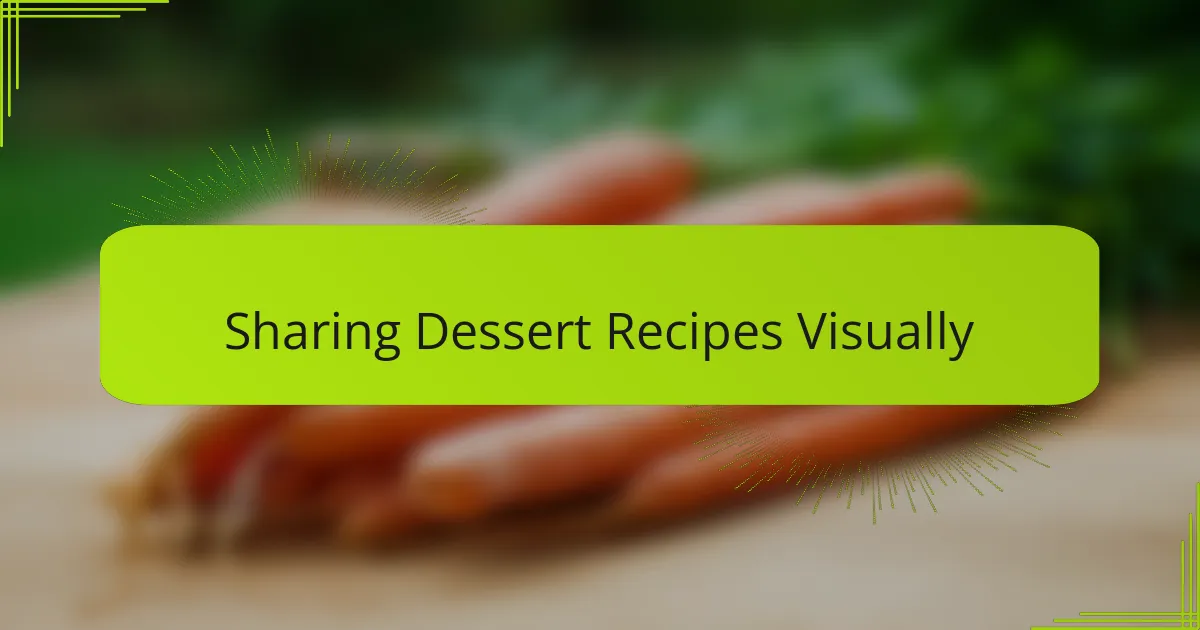
Sharing Dessert Recipes Visually
Sharing dessert recipes visually, for me, has always been about more than just showing a pretty picture. It’s about inviting others into the experience—making them feel the warmth of the kitchen and the excitement of each step. When I share photos that capture those moments, I often wonder if the viewer can almost taste the sweetness or feel the crunch through the image itself.
I’ve noticed that visually sharing these recipes turns a simple instruction list into a rich story. Instead of just reading about folding batter or glazing a tart, people see exactly how it should look, which builds their confidence and curiosity. Don’t you find it easier to trust a recipe when you can see each stage clearly, like having a friendly guide beside you?
Sometimes, sharing visually also means being vulnerable—showing that imperfect frosting swirl or a slightly cracked crust. I’ve learned those little “flaws” make the recipe feel more human and relatable. Isn’t that what draws us closer to homemade desserts, the feeling that anyone can recreate that delicious moment in their own kitchen?

